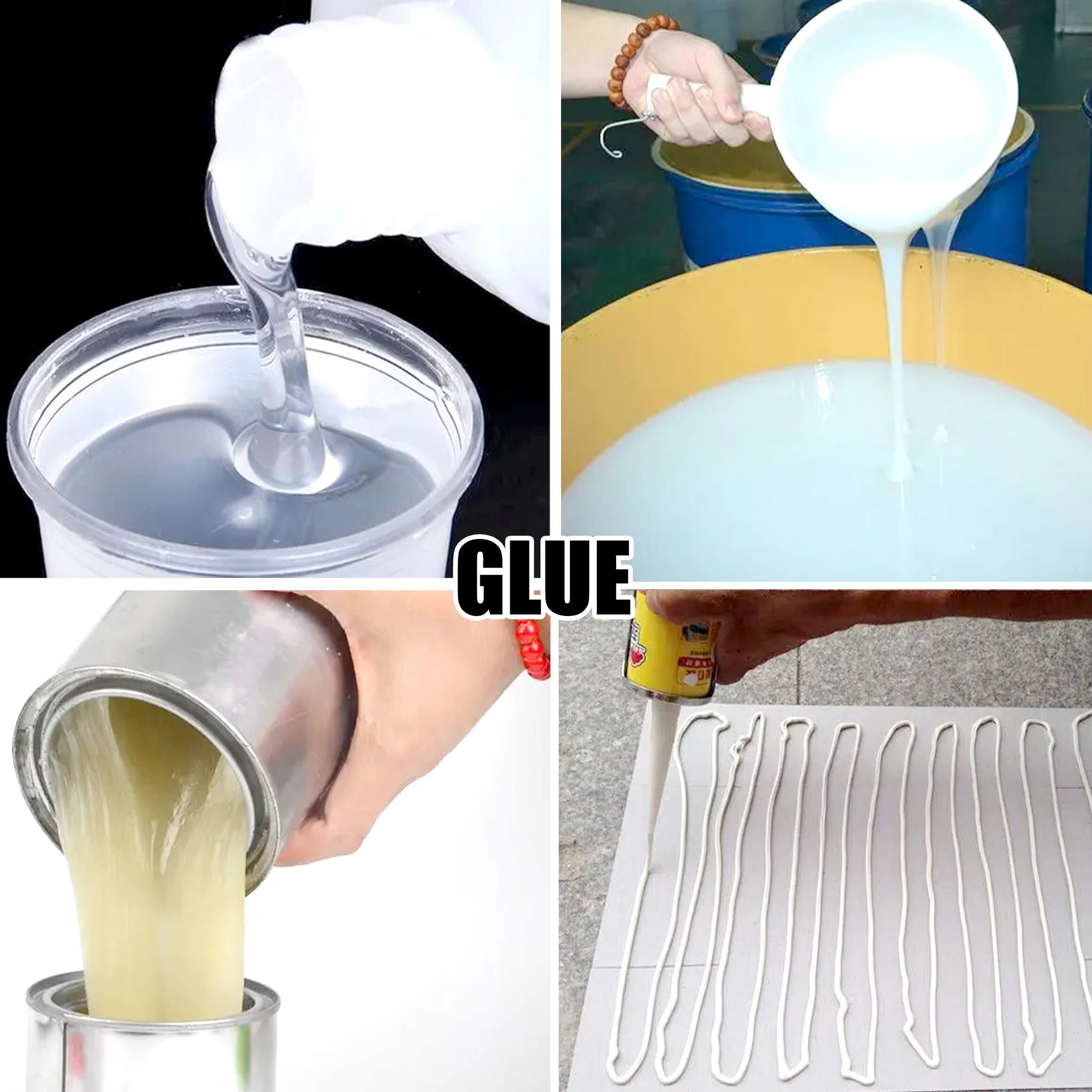Základní faktory určující třídy HPMC
Rozdíly ve viskozitě mezi třídami
Viskozita hydroxypropylmethylcelulózy (HPMC) hraje důležitou roli v jejím použití v různých průmyslových odvětvích. Různé třídy HPMC mají odlišnou míru viskozity, která určuje jejich vlastnosti a oblasti použití. Nízká viskozita, obvykle v rozmezí 100 až 2000 mPas, je vhodná pro aplikace, kde je potřeba, aby se hmota dobře roztírala po povrchu. Tato třída se často používá například v nátěrových hmotách a lepidlech. Střední třída se pohybuje kolem 2000 až 5000 mPas a využívá se v případech, kde je důležitá konzistence směsi. Stavební pracovníci ji často používají například pro maltové směsi a lepidla na dlažbu, protože dobře drží tvar a nejsou příliš tekuté. Vysoká viskozita, nad 5000 mPas, se vyznačuje vynikající schopností vázat vodu. Stavbářské firmy ji využívají například pro samonivelační podlahy nebo speciální cementové povrchy, kde je řízení vlhkosti klíčové během procesu vytvrzování. Většina výrobců jasně uvádí tyto rozsahy viskozity, aby zákazníci věděli, který produkt přesně odpovídá požadavkům jejich projektu.
Výrobci zaznamenali významné rozdíly ve viskozitě mezi různými typy HPMC. U lepidel pro obklady například nejlepší výsledky poskytují viskozity kolem 5000 cP. Pokud jde o omítky na bázi cementu, vyšší viskozita kolem 15 000 cP obvykle funguje mnohem lépe. Význam správné volby viskozity se ještě více vynoří v farmaceutických aplikacích, kde je klíčová přesnost. Různé viskozity HPMC nejsou jen o zahuštění směsi, ale ovlivňují i rychlost uvolňování léčiv do těla. Správná volba viskozity je rozhodující pro správné fungování produktů, ať už se používají v jakékoli oblasti.
Vliv stupně substituce na vlastnosti
Množství substituace (nazývané DS) skutečně určuje, jaké vlastnosti HPMC nakonec má, což ovlivňuje vše od toho, jak vypadá fyzicky až po to, jak se chová chemicky. V podstatě DS měří, kolik hydroxylových skupin je na těchto celulózových molekulech vyměněno za methylové a hydroxypropylové skupiny. Když se tyto substituce stanou, změní se několik důležitých vlastností, jako je rozpustnost materiálu, zda vytváří gely a zda může vytvářet dobré filmy. Když se děje hodně substituce, získáme polymer, který odpuzuje vodu lépe, protože se stává více hydrofobním. Ale snížit substituci a věci se obrátí jiným směrem, takže materiál je více vodou milující, což znamená, že se snadněji rozpouští ve vodě.
Stupeň substituce (DS) hraje důležitou roli při určování toho, jak hydroxypropylmethylcelulóza (HPMC) funguje v různých aplikacích. Když hladina DS stoupá, polymer se zlepšuje ve tvorbě filmů a gelů, což ho činí ideálním pro věci jako potahování tablet v medicíně, kde potřebujeme, aby se léky uvolňovaly pomalu v průběhu času. Na druhou stranu, když je DS nižší, materiál se stává mnohem rozpustnějším ve vodě. Tato vlastnost je vhodná pro kosmetiku a péčové produkty, protože často vyžadují ingredience, které se rychle rozpouštějí, ale zároveň udržují vlhkost. Malé úpravy hodnot DS mohou ve skutečnosti způsobit velký rozdíl v tom, jak HPMC funguje, a umožňují výrobcům vytvářet přizpůsobené verze pro všechno, od potravinářského průmyslu po stavební materiály, v závislosti na tom, jaké vlastnosti jsou nejdůležitější.
V podstatě je výpočet správného stupně substituce klíčový pro optimalizaci účinnosti a všestrannosti HPMC. Pochoopením DS a jeho dopadů mohou výrobci inovovat receptury přizpůsobené konkrétním potřebám, čímž se zlepšují výsledky aplikací napříč odvětvími, jako jsou farmacie, stavebnictví a kosmetika.
HMPC s nízkou viskozitou – typy a aplikace
Farmaceutické a potravinářské použití
Nízko viskózní HPMC se stal nezbytným prostředkem v farmaceutickém průmyslu, kde slouží především jako pojivo a vytváří ochranné filmy kolem tablet a kapslí. Pokud se tento materiál použije během procesu potahování, vytvoří hladkou vrstvu, která nejen urychluje výrobu, ale také dodává hotovému produktu profesionální vzhled. V potravinářském průmyslu se výrobci spoléhají na nízko viskózní HPMC, aby zlepšili chuť a strukturu bezlepkových výrobků. Tato látka napodobuje pružné vlastnosti lepku tím, že drží ingredience pohromadě a dodává směsím konzistenci podobnou těstovině. Tržní analýzy ukazují výrazný růst prodeje potravinářské HPMC na celosvětové úrovni, hlavně proto, že spotřebitelé hledají více alternativ k tradičním pšeničným potravinám. Jak lidé nadále preferují bezlepkové možnosti, poptávka po těchto speciálních aditivích roste rovnoměrně napříč více odvětvími.
Výhody v detergentech a kosmetice
Pokud jde o prací prostředky, nízkoviskózní HPMC přináší několik výhod. Pomáhá dosáhnout lepší hustoty, přičemž udržuje částice rovnoměrně rozptýlené v celém roztoku, což je velmi důležité pro dosažení konzistentního čisticího účinku pokaždé. Výrobci pracích prostředků považují tento parametr za velmi užitečný, protože zabraňuje usazování sedimentu na dně nádob. V případě kosmetiky obsahují mnohé mléčka a krémy na obličej rovněž nízkoviskózní HPMC. Tato látka působí jako emolient, díky čemuž se výrobky nanášejí hladce a lépe zadržují vlhkost. Průmyslové zprávy ukazují, že v poslední době stále více značek začíná zařazovat HPMC do svých řad ekologické kosmetiky. Ty oceňují, jak tato surovina podporuje udržitelné postupy, aniž by zhoršila senzorické vlastnosti výrobků nebo jejich účinnost ve srovnání s tradičními recepturami.
Středně viskózní třídy pro stavebnictví
Lepidla na dlaždice a zlepšení malt
Hydroxypropylmethylcelulóza střední viskozity, běžně známá jako HPMC, se stala nezbytnou součástí moderních stavebních projektů, zejména při práci s lepidly pro obklady. Při míchání do formulací lepidel tato konkrétní třída HPMC výrazně usnadňuje nanášení materiálu na povrchy a zároveň vytváří silnější vazbu mezi obklady a materiálem, ke kterému jsou připevňovány. U zednických prací také HPMC střední viskozity vyniká právě v těch klíčových počátečních fázích, kdy maltovina správně tuhne a vytvrzuje se. Stavitelé zaznamenávají celkově lepší výsledky, protože materiál déle drží pohromadě bez praskání nebo rozpadání. Odborné zprávy ukazují, že stavitelé se v současnosti stále častěji obracují právě k řešením s HPMC pro své potřeby týkající se obkladů a malt. Zlepšené provozní vlastnosti prostě dávají ekonomický smysl, což vysvětluje, proč roste poptávka po variantách se střední viskozitou na staveništích po celém světě.
Retence vody v cementových systémech PRODUKTY
Středně viskózní HPMC hraje klíčovou roli při udržování správné vlhkosti cementových směsí během vytvrzování, což je naprosto nezbytné pro kvalitní hydrataci a správné vytvoření pevnosti. Když stavitelé přidají HPMC do svých cementových výrobků, tyto materiály udržují vodu po mnohem delší dobu než obvykle, což znamená silnější a odolnější výsledné produkty. Tuto skutečnost potvrzují výsledky několika různých studií, které ukazují, že cement smíchaný s HPMC je nápadně silnější. Všechny tyto vylepšení celkově zrychlují a zefektivňují stavební práce. Cementové výrobky obsahující HPMC umožňují pracovníkům lépe kontrolovat pohyb vody v materiálu během jeho tuhnutí, a proto jsou budovy nakonec pevné a dlouhodobě spolehlivé. Proto považují mnozí stavitelé středně viskózní HPMC za důležitou součást většiny cementových projektů, které realizují.

Speciální použití HPMC s vysokou viskozitou
Samonivelační hmoty a vnější špachtle
Při práci se samonivelačními směsmi pomáhá vysokoviskózní hydroxypropylmethylcelulóza nebo HPMC výrazně zlepšit tok a vyrovnání těchto materiálů během aplikace. Pro každého, kdo se snaží dosáhnout hladkých a rovnoměrných povrchů na podlahách, je dosažení správné konzistence velmi důležité. To je přesně to, co vysokoviskózní HPMC dělá nejlépe – udržuje správný tok materiálu a zároveň minimalizuje ty otravné drobné výběžky a hrbolky, které se objevují po zalití. Vnější aplikace těží také, protože tento typ HPMC dobře funguje i v exteriérových tmelích. Lepší přilnavost k povrchům a pružnost materiálu umožňují, aby vydržely změny počasí bez praskání nebo odlupování. Stačí pomyslet na všechny ty výkyvy teplot, které zažíváme venku, spolu s deštěm a kolísáním vlhkosti. Odborníci si v průběhu času všimli tohoto trendu, zejména na trzích, kde existují specifické požadavky na výkon. Stále více stavitelů se proto obrací k řešením s vysokoviskózní HPMC, protože prostě fungují lépe v mnoha různých typech stavebních prací, které čelí náročným podmínkám.
Formulace léčiv s kontrolovaným uvolňováním
Hustá HPMC hraje klíčovou roli při vytváření léků s prodlouženým uvolňováním, které působí po dlouhou dobu. Když tento materiál vytváří uvnitř tablet matricové struktury, umožňuje pomalé uvolňování účinných látek z pilulek, takže pacienti dostávají lék rovnoměrně po celý den. To znamená, že je potřeba méně dávkování, což usnadňuje dodržování léčby. Tradiční metody nedosahují stejné úrovně stability uvolňovacích rychlostí jako HPMC. Rozdíl je důležitý, protože náhlé nárůsty hladiny léku mohou způsobit nežádoucí reakce. Mnoho testů prokázalo, že HPMC funguje u různých typů léků, a proto se stává nezbytnou součástí spolehlivých systémů podávání léků. Stále více firem se nyní obrací k HPMC, protože vidí, jak pomáhá udržovat stálé výkony a zároveň splňuje regulační normy pro kontrolu kvality.
Výběr vhodných tříd HPMC: Klíčové aspekty
Přizpůsobení specifikací požadavkům aplikace
Volba správného typu hydroxypropylmethylcelulózy (HPMC) má zásadní význam pro výkon v dané aplikaci. Při výběru HPMC je třeba zvážit několik klíčových faktorů, jako je požadovaná viskozita nebo snadnost rozpustnosti. Upravitelé viskozity jsou dobrým příkladem – zde vynikají typy s vysokou viskozitou, protože vytvářejí filmy a poskytují potřebnou hustotu. Na druhou stranu, pokud je potřeba rychlé rozpouštění, dává větší smysl volit nízkou viskozitu. Zohlednit je třeba i vliv prostředí. Teplotní změny nebo hladina vlhkosti mohou ovlivnit chování různých typů HPMC ve formulacích. V praxi jsme často viděli, že nesprávná volba typu HPMC vedla k problémům v pozdějších fázích. Výrobci by proto měli mít tyto proměnné na paměti už během procesu výběru.
Zhodnoťte požadavky aplikace včetně viskozity a rozpustnosti. Zvažte environmentální faktory ovlivňující produkt. Posuďte kompatibilitu formulace s ostatními ingrediencemi. Výrobci mohou profitovat ze sestavení kontrolního seznamu nebo konzultace s odborníky z oboru.
Nákladová efektivita a kompromisy výkonnosti
Výběr správné jakosti HPMC obvykle znamená hledání jemné rovnováhy mezi cenovou dostupností a skutečnou funkčností. Nákup větších množství HPMC s jistotou sníží náklady, ale někdy to může být na úkor vlastností, které jsou pro některé aplikace nezbytné. Levnější varianty často nejsou dostačující v případech, kdy je na prvním místě výkon, například v průmyslu vyžadujícím vysokou přesnost. Průmyslová data ukazují na několik jakostí HPMC, které se osvědčily a přinášejí spolehlivé výsledky v různých oblastech, včetně výroby stavebních materiálů, léčiv a potravinářského průmyslu. Aby bylo možné učinit rozumné rozhodnutí, je třeba zohlednit jak rozpočtové omezení, tak i technické požadavky.
Porovnejte náklady mezi nákupem ve velkém a požadovanými specifikacemi typu. Analyzujte kompromisy ve výkonu spojené s výběrem levnějších typů. Přezkoumejte tržní trendy za účelem získání vhledů do nákladově efektivních investic do HPMC. Porozumění těmto jemnostem zajistí, že výrobci vyberou typy HPMC, které maximalizují jak nákladovou efektivitu, tak výkon produktu.
Často kladené otázky
Jaká je důležitost viskozity u typů HPMC?
Viskozita určuje rozdělovatelnost, pokrytí a funkčnost HPMC v různých aplikacích, jako jsou povlaky, lepidla a stavební materiály.
Jak ovlivňuje stupeň substituce vlastnosti HPMC?
Stupeň substituce ovlivňuje rozpustnost HPMC, tvorbu gelu a schopnost tvorby filmu, přičemž mění jeho hydrofilní nebo hydrofobní charakter podle úrovně substituce.
Proč je HPMC s nízkou viskozitou preferován ve farmaceutickém a potravinářském průmyslu?
HPMC s nízkou viskozitou se používá pro své pojící a filmotvorné vlastnosti ve formulacích tablet a jako zahušťovadlo pro bezlepkové potravinářské produkty.
Jak HPMC se střední viskozitou zlepšuje stavební materiály?
HPMC se střední viskozitou zvyšuje adhezi a vytvrzování v lepidlech na dlaždice a maltách, čímž poskytuje lepší trvanlivost a retenci vlhkosti u cementových produktů.
Jakou roli hraje HPMC s vysokou viskozitou ve speciálních aplikacích?
Hustá HPMC se používá pro své vynikající vlastnosti toku v samonivelačních směsích a pro svou schopnost vytvářet lékové formy s kontrolovaným uvolňováním.
Obsah
- Základní faktory určující třídy HPMC
- HMPC s nízkou viskozitou – typy a aplikace
- Středně viskózní třídy pro stavebnictví
- Speciální použití HPMC s vysokou viskozitou
- Výběr vhodných tříd HPMC: Klíčové aspekty
-
Často kladené otázky
- Jaká je důležitost viskozity u typů HPMC?
- Jak ovlivňuje stupeň substituce vlastnosti HPMC?
- Proč je HPMC s nízkou viskozitou preferován ve farmaceutickém a potravinářském průmyslu?
- Jak HPMC se střední viskozitou zlepšuje stavební materiály?
- Jakou roli hraje HPMC s vysokou viskozitou ve speciálních aplikacích?
 EN
EN
 AR
AR
 CS
CS
 DA
DA
 NL
NL
 FI
FI
 FR
FR
 DE
DE
 EL
EL
 HI
HI
 IT
IT
 JA
JA
 KO
KO
 NO
NO
 PL
PL
 PT
PT
 RO
RO
 RU
RU
 ES
ES
 SV
SV
 IW
IW
 ID
ID
 SR
SR
 SK
SK
 UK
UK
 VI
VI
 HU
HU
 TH
TH
 TR
TR
 AF
AF
 MS
MS
 CY
CY
 IS
IS
 BN
BN
 LO
LO
 LA
LA
 NE
NE
 MY
MY
 KK
KK
 UZ
UZ


